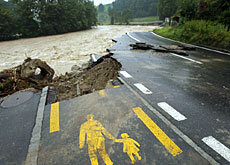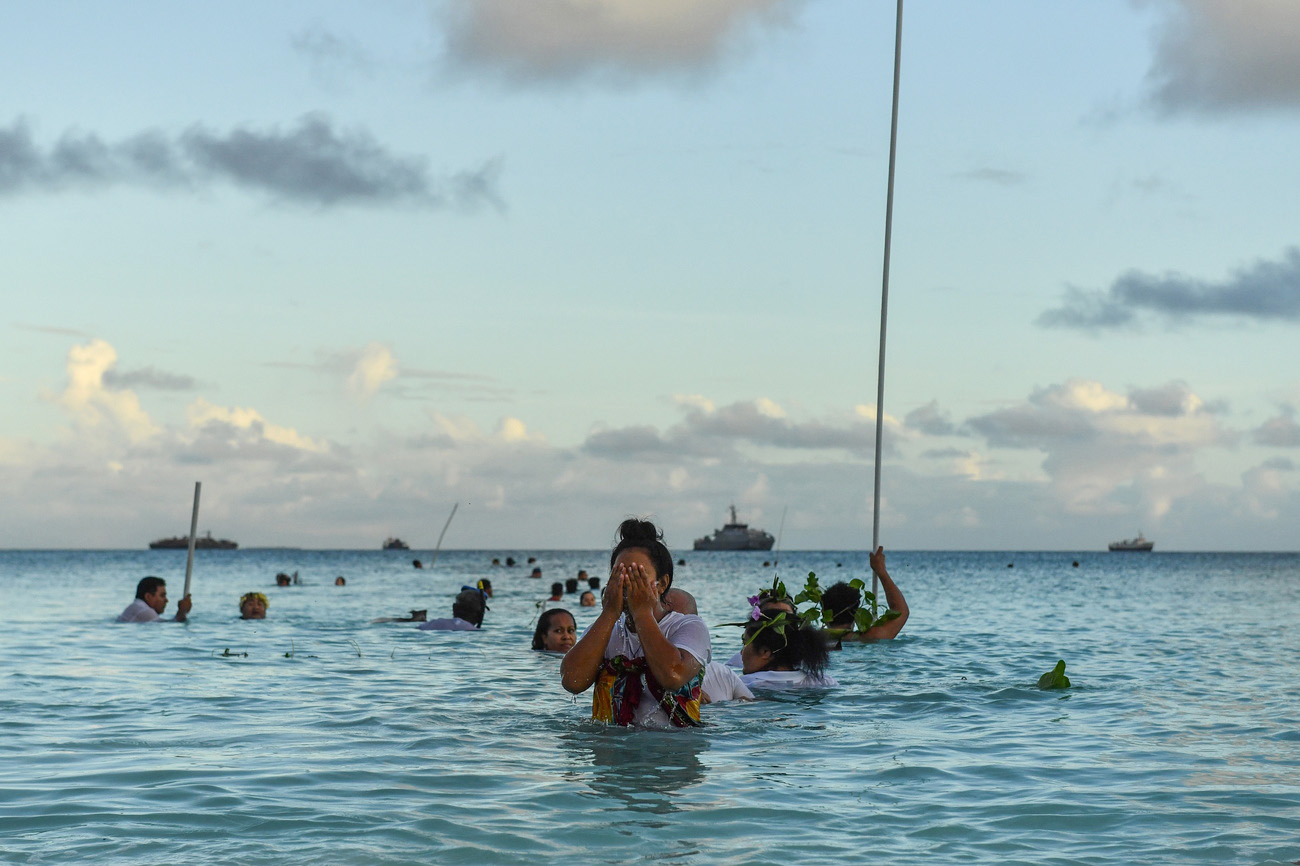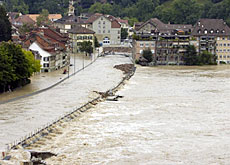Flooding causes more deaths in Switzerland

The death toll due to heavy flooding in Switzerland has risen. Four people have been confirmed dead and another two are missing.
The army and fire brigades are fighting to contain rising lake and river waters that have forced 2,500 people to flee their homes or holiday residences.
One person was killed and another went missing when eight buildings collapsed in the lakeside town of Brienz in the Bernese Oberland.
The body of a man was found on Tuesday morning in a swollen stream near the village of Dürnten in canton Zurich.
A woman has been reported missing after she slipped and fell in the River Landquart in canton Graubünden. She was walking on the riverbank when she was struck by a tree trunk.
Two firefighters were killed by a mudslide on Sunday night in the Entlebuch region near Lucerne when they tried to help evacuate a farm.
In Lucerne, the lake was close to reaching record levels late on Tuesday morning. Water levels are climbing four centimetres every hour and the local crisis team has abandoned plans to protect the riverbanks and lakeside in order to concentrate on protecting “important sites”.
Parts of the city centre are already under water, the underground motorway junction has been flooded and water has started to reach the Swiss Transport Museum.
Hardest hit
The heavy rains hit hardest in canton Lucerne over the weekend with landslides and flooding in many areas. Many roads and railway lines are still cut off.
Central Switzerland continued to struggle with flooding problems on Tuesday. The resort of Engelberg in canton Obwalden was isolated after rail and road links were cut and some people were forced to leave their homes overnight.
In canton Schwyz, flooding caused by the River Muota forced the evacuation of 400 people in the village of Ibach. Another 300 were evacuated from the town of Schwyz.
Flooding has also spread to eastern Switzerland. The Lower Engadine valley in canton Graubünden was cut off after its last link to the outside world – a rail bridge – collapsed on Tuesday.
The Gotthard rail and road links – the main north-south axis through the Swiss Alps – were closed.
The Lötschberg rail tunnel also remained inaccessible after the Interlaken east station was closed due to flooding.
Helicopter shuttle
The situation is also critical in the Bernese Oberland. The resorts of Grindelwald and Lauterbrunnen were cut off from the rest of the world on Tuesday and their only link was a helicopter shuttle.
The rising levels of lakes Brienz and Thun threaten large stretches of the area around Interlaken.
Around 150 people – many of them tourists – spent the night in the town’s civil protection shelters. Schools in the region have been closed.
The authorities fear that the River Aare could cause even more damage around Interlaken. Further downstream, water levels have continued to rise in Thun, where cellars were flooded and power was cut in places.
In the capital Bern, water levels continued to climb after the Matte neighbourhood was flooded on Monday. The Aare’s flow reached 600 cubic metres per second on Tuesday morning, the most since the flooding began.
swissinfo with agencies
Torrential rain over the past three days has resulted in the evacuation of thousands of people.
Four people have been confirmed dead and another two are missing.
Flooding and mudslides are estimated to have caused damage worth more than SFr100 million ($79 million).
Since the 1970s, natural catastrophes have claimed the lives of nearly 100 people in Switzerland.
The damage caused by avalanches, flooding and landslides is estimated to have cost more than SFr9 billion over the past three decades.

In compliance with the JTI standards
More: SWI swissinfo.ch certified by the Journalism Trust Initiative











You can find an overview of ongoing debates with our journalists here . Please join us!
If you want to start a conversation about a topic raised in this article or want to report factual errors, email us at english@swissinfo.ch.